In Total Football Analysis’ 2025 Breakout XI, the left centre-back is 19-year-old Taras Mykhavko, who plays for Dynamo Kyiv.
At the time of writing, Dynamo Kyiv is the best defensive side in the Ukrainian Premier League, conceding 11 goals.
The young defender, who stands at 185cm / 6’1” and weighs 69kg / 152lbs, has joined the first team from the beginning of 2024, coming from the U19 team he joined from PFC Lviv.
The 19-year-old has played in 15 of the league’s 17 matches this season, missing two due to injury.
In these 15 matches, he received no yellow cards, indicating that he can get the ball back without tough fouls.
This tactical analysis and player-focused scout report aims to explain why we’ve selected Taras Mykhavko for this team.
Our player analysis will use data and video analysis to explain why this left-footed centre-back is a rising talent to watch closely as 2025 approaches.
Taras Mykhavko Statistical Profile
As shown in the heat map below, we are talking about a diversely skilled defender who can play as a left centre-back in a four-defender backline or a three-defender backline.
This player has more ability to push forward while the ball is in his side.
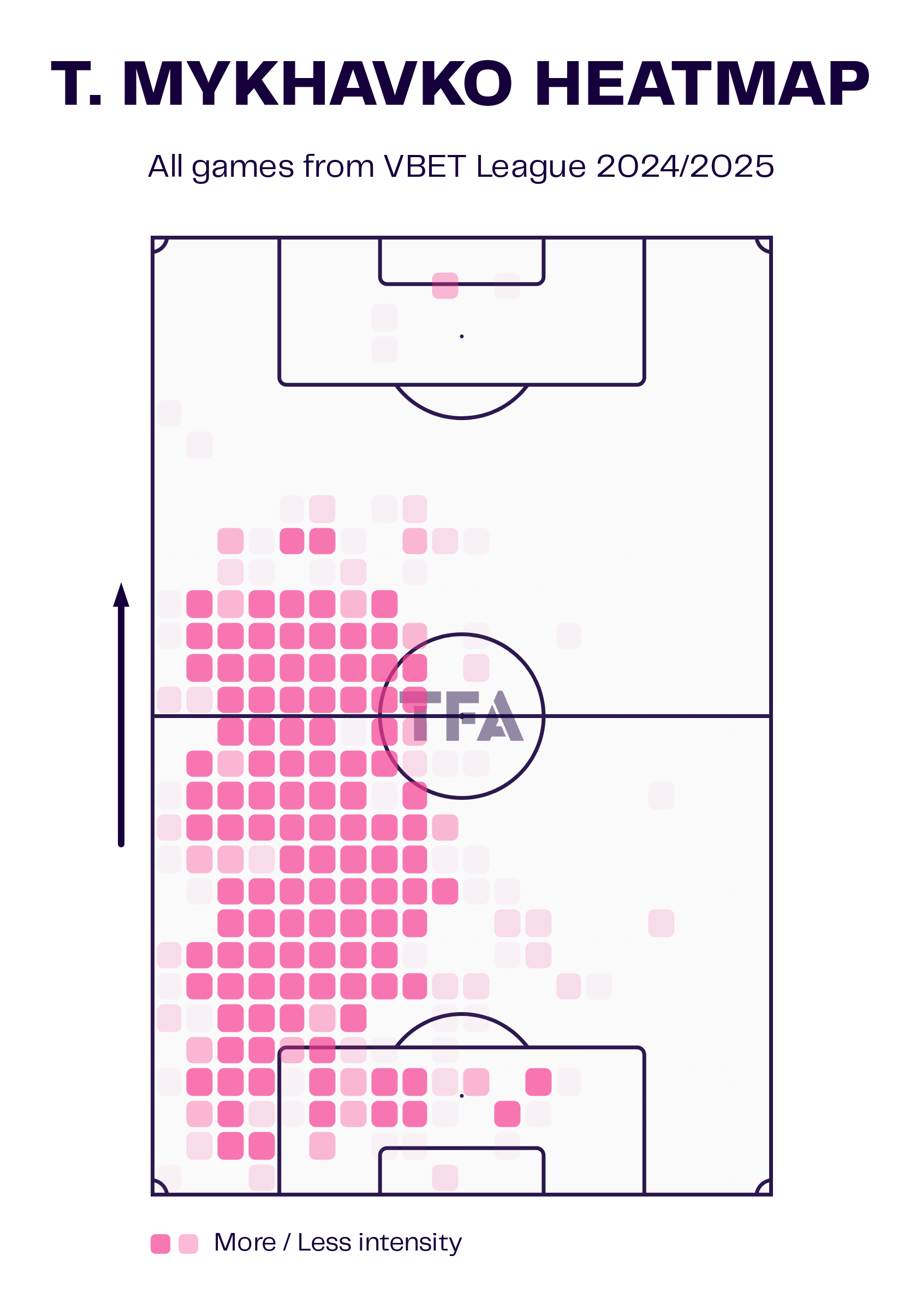
The photo below features a pizza chart featuring some significant metrics related to Taras Mykhavko’s all-around game, divided into three unique categories: attacking, possession, and defending metrics.
The numbers on the pizza chart represent Taras’ performance in these criteria when compared with other left centre-backs playing in the leagues at the same tier in 2024/25.
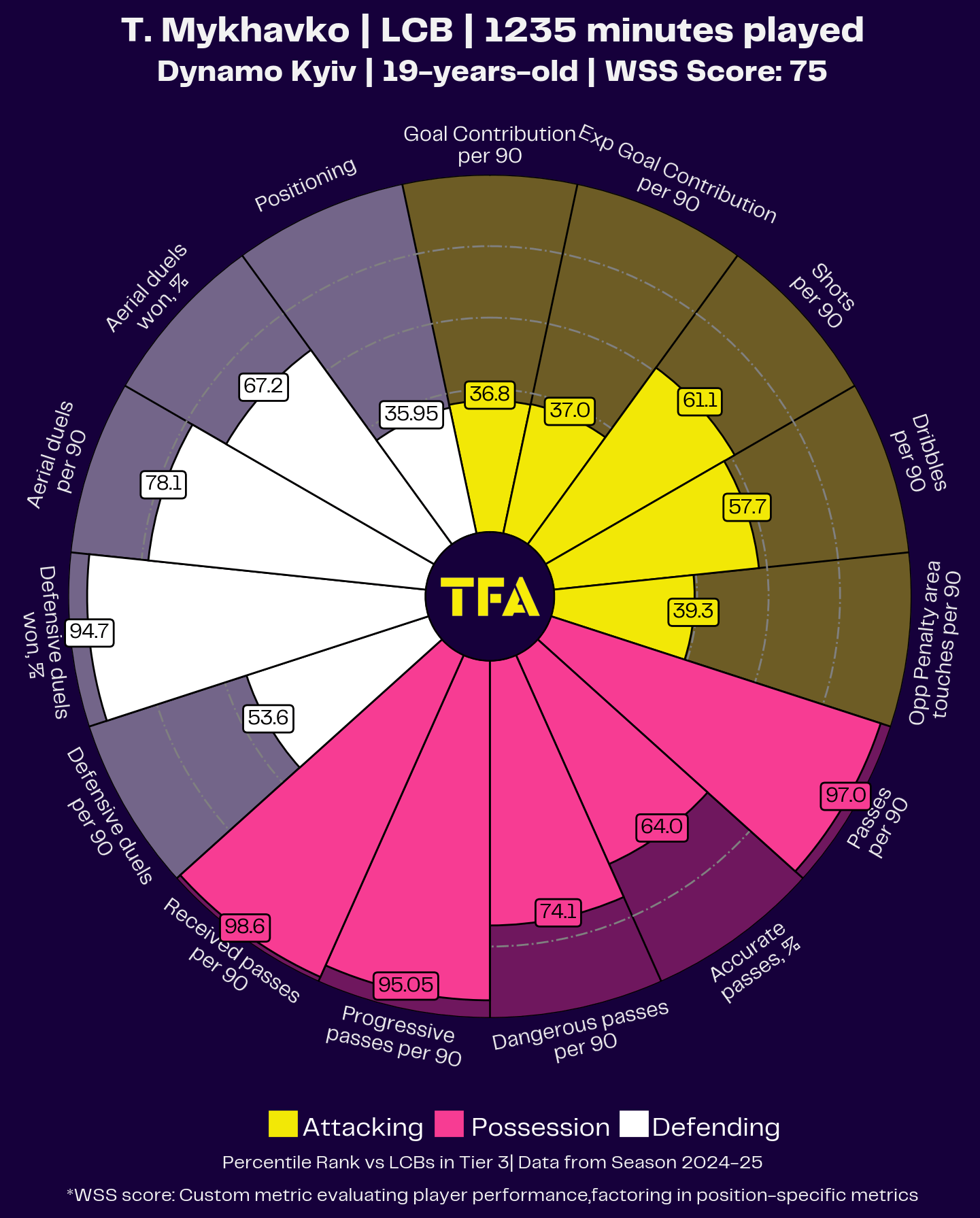
He stands out in the possession section in the photo above, especially in progressive passes per 90.
As we will clarify in the video analysis, this is a small indicator that he fits in elite attacking teams.
It’s also clear that he is good at the defensive duels won percentage (94.7), but not a beast in the aerial duels one percentage (67.2).
Taras Mykhavko Skills With The Ball
Starting with his attacking skills, we will discuss his ability to be effective in the possession phase when the team has the ball.
Taras Mykhavko Dribbling Abilities
His clearest skill is his ability to dribble with the ball to benefit the team.
In the case below, we prove that dribbling is not just running with the ball without a desire; it also allows the player to open many spaces, failing the opponent’s pressing scheme.
As shown below, he has the ball but mostly has no free choice to pass.
At the same time, an opponent presses him in a curved run to cover the shadow of the full-back while pressing him, so he decides to dribble forward with the ball.
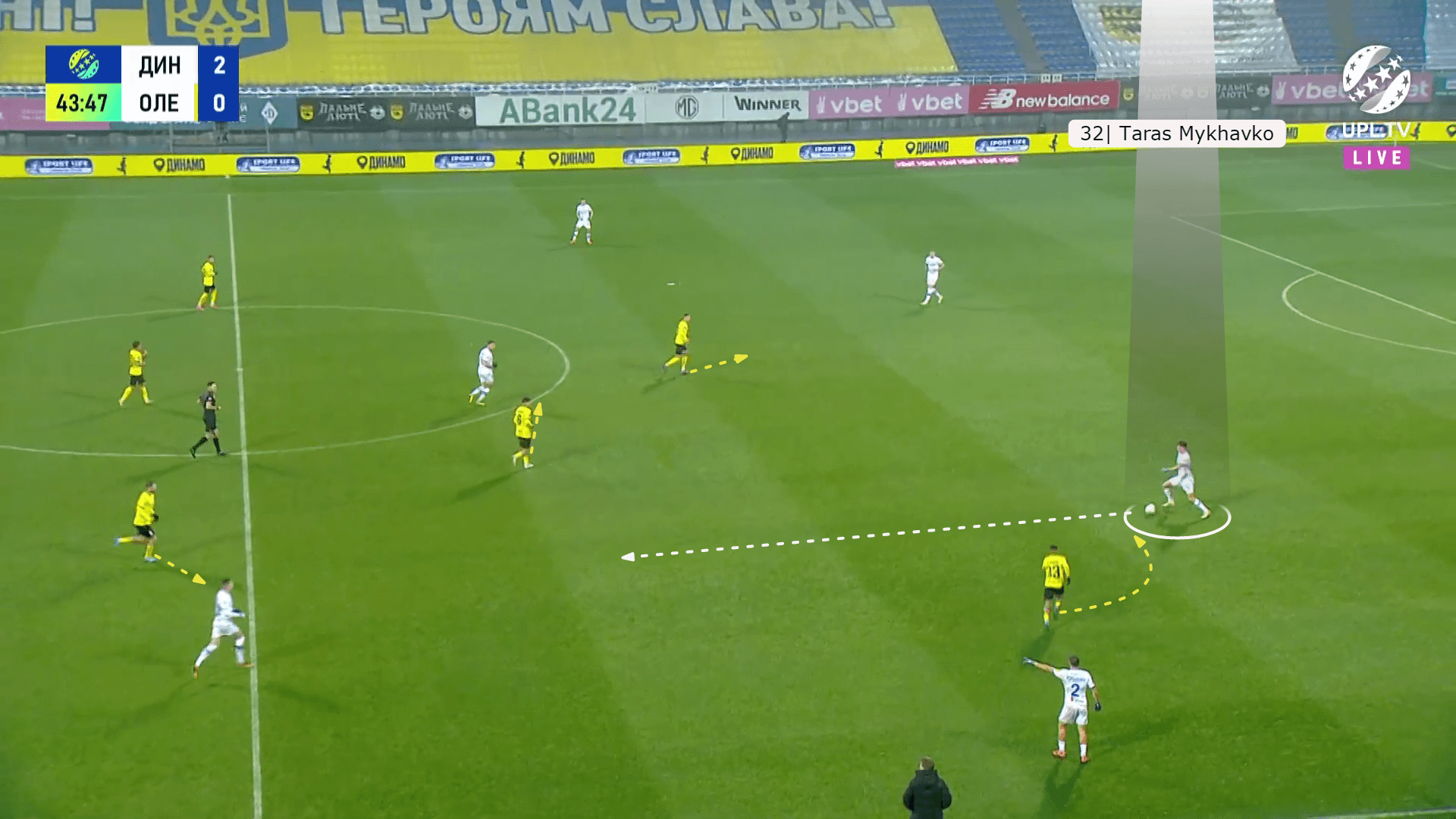
As shown below, he makes it difficult for an opponent to press him or stay with the midfielder.
The midfielder decides to press him, so he easily passes the ball to his mate, who becomes free.
He also has an option now to pass to the full-back.
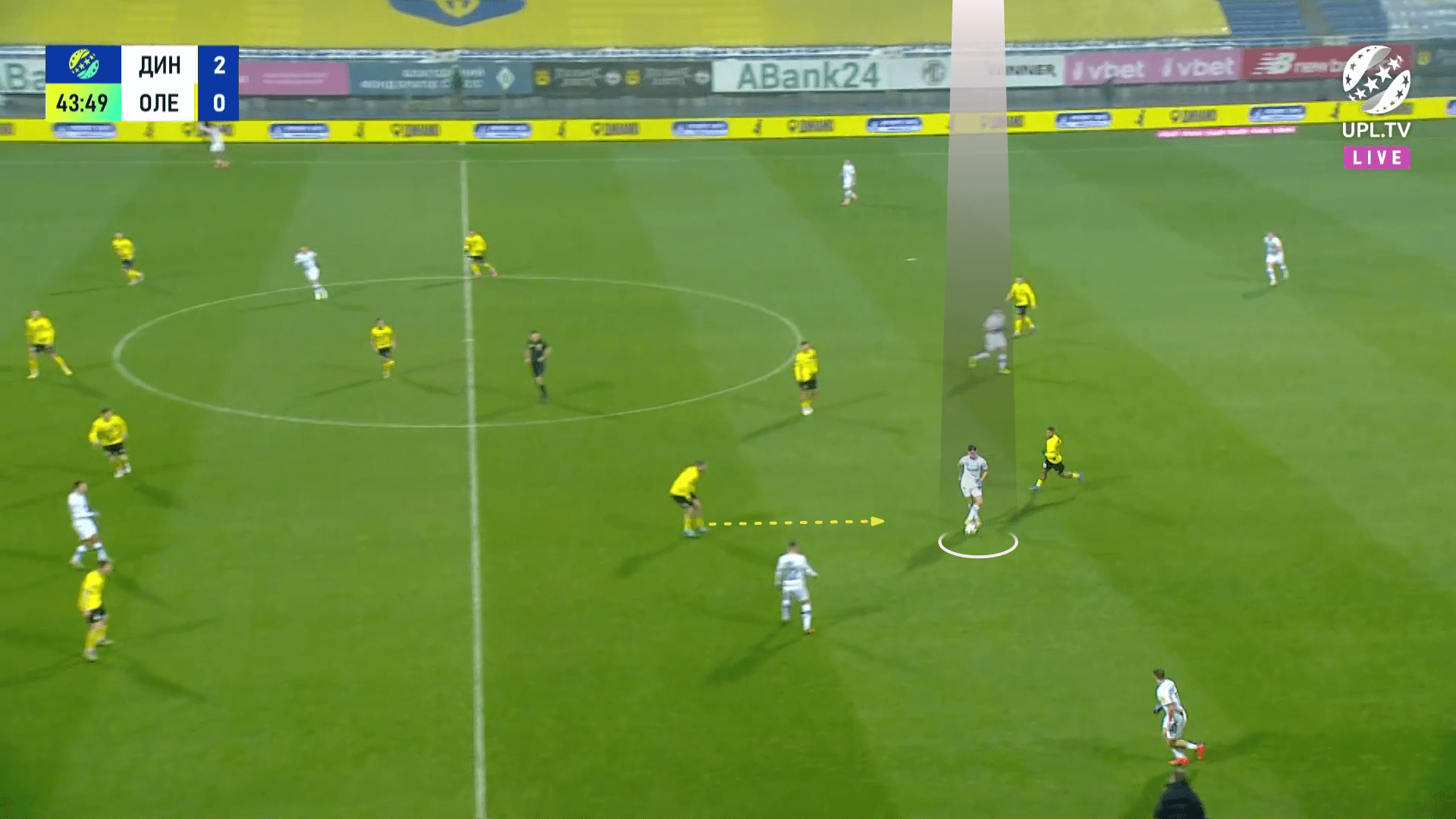
In the case below, he does the same thing against AS Roma in the UEFA Europa League, clearly showing the importance of this action.
He has the ball while the striker is still too far away from pressing, so he asks the opponent the same question, not just standing on the ball and closing the passing option, as many defenders do.
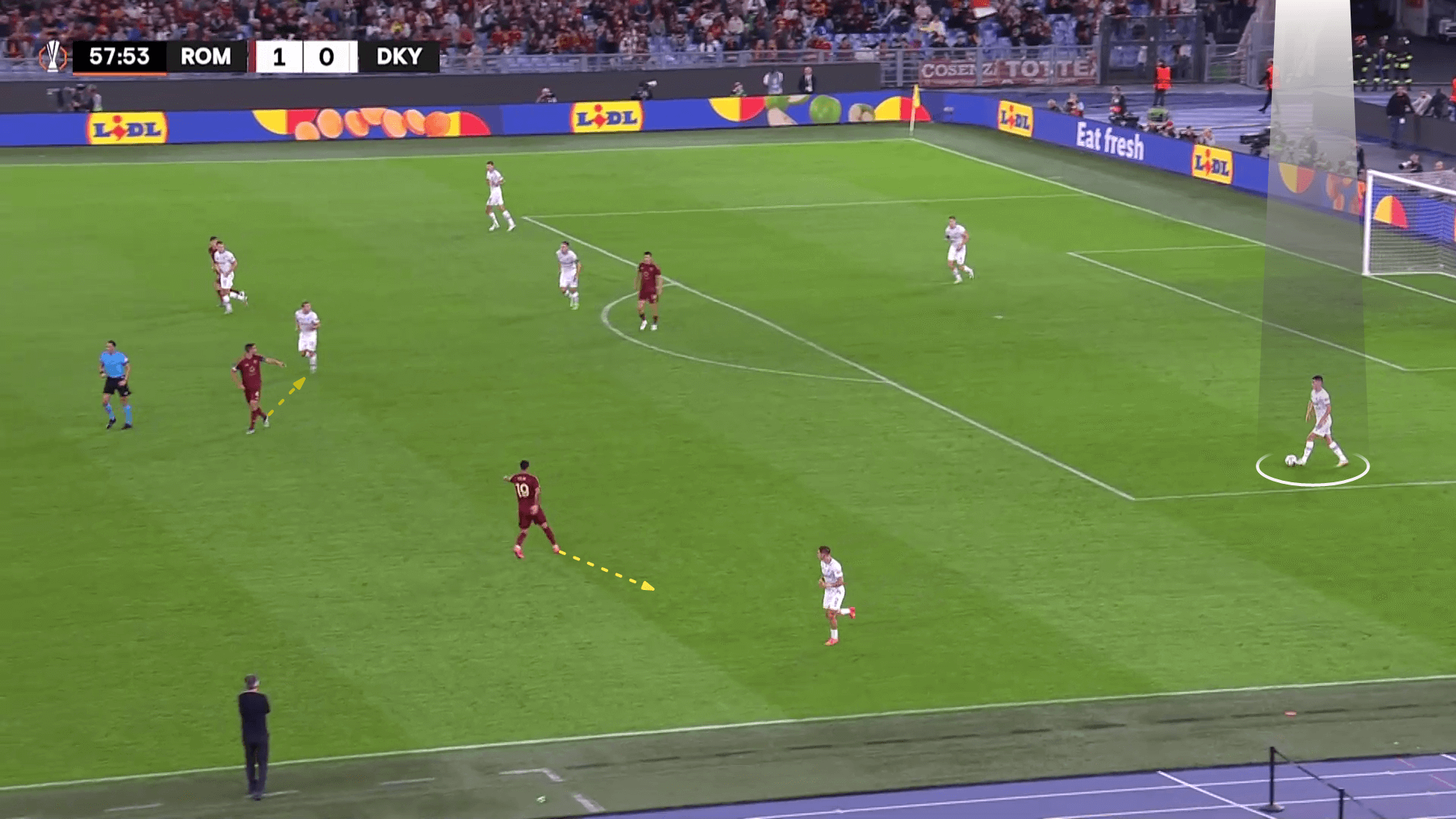
He continues dribbling, so a midfielder is asked to go to press him.
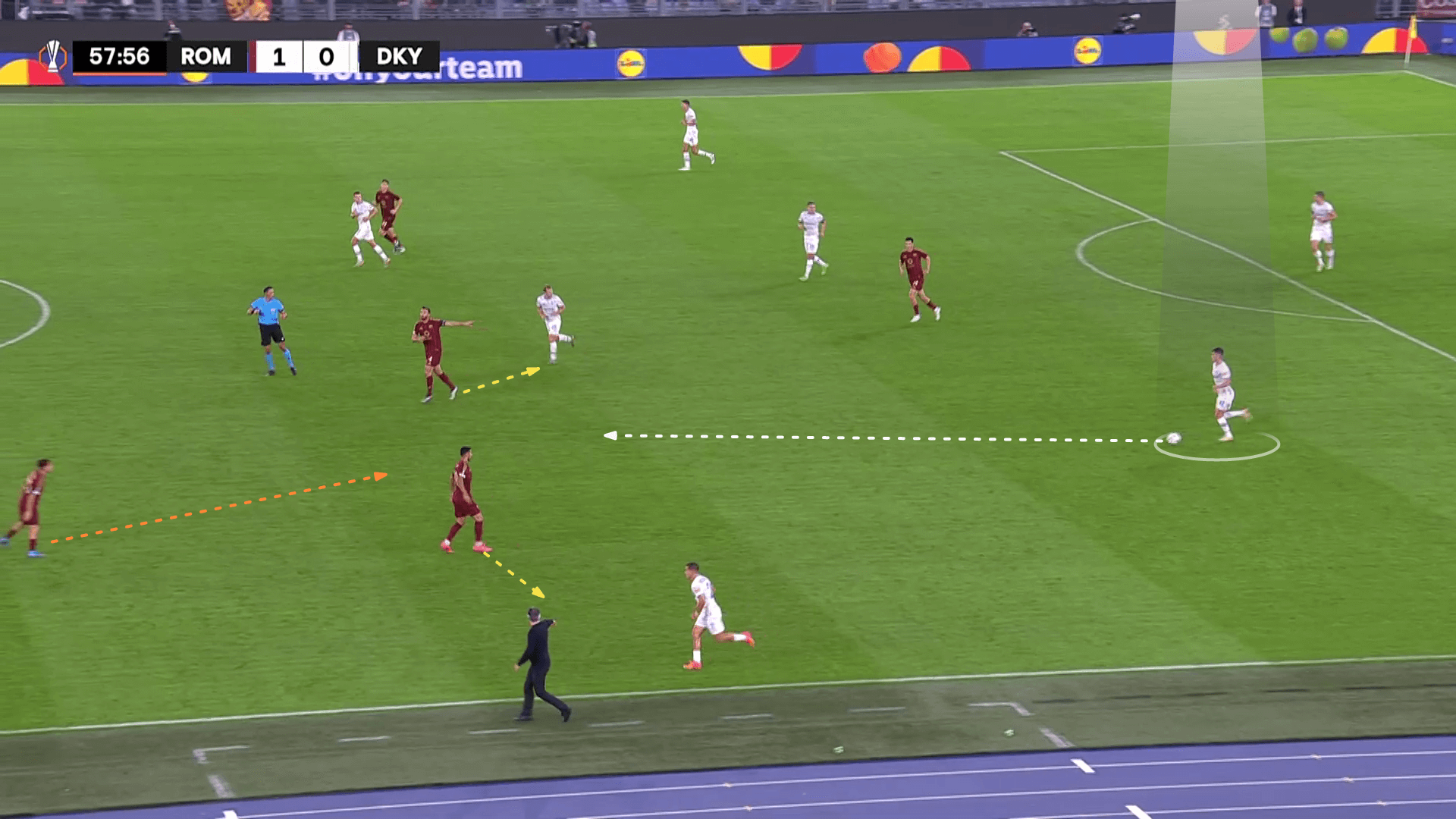
This player initially leaves the space where he stands, which Taras Mykhavko exploits by sending a pass behind him into the empty space.
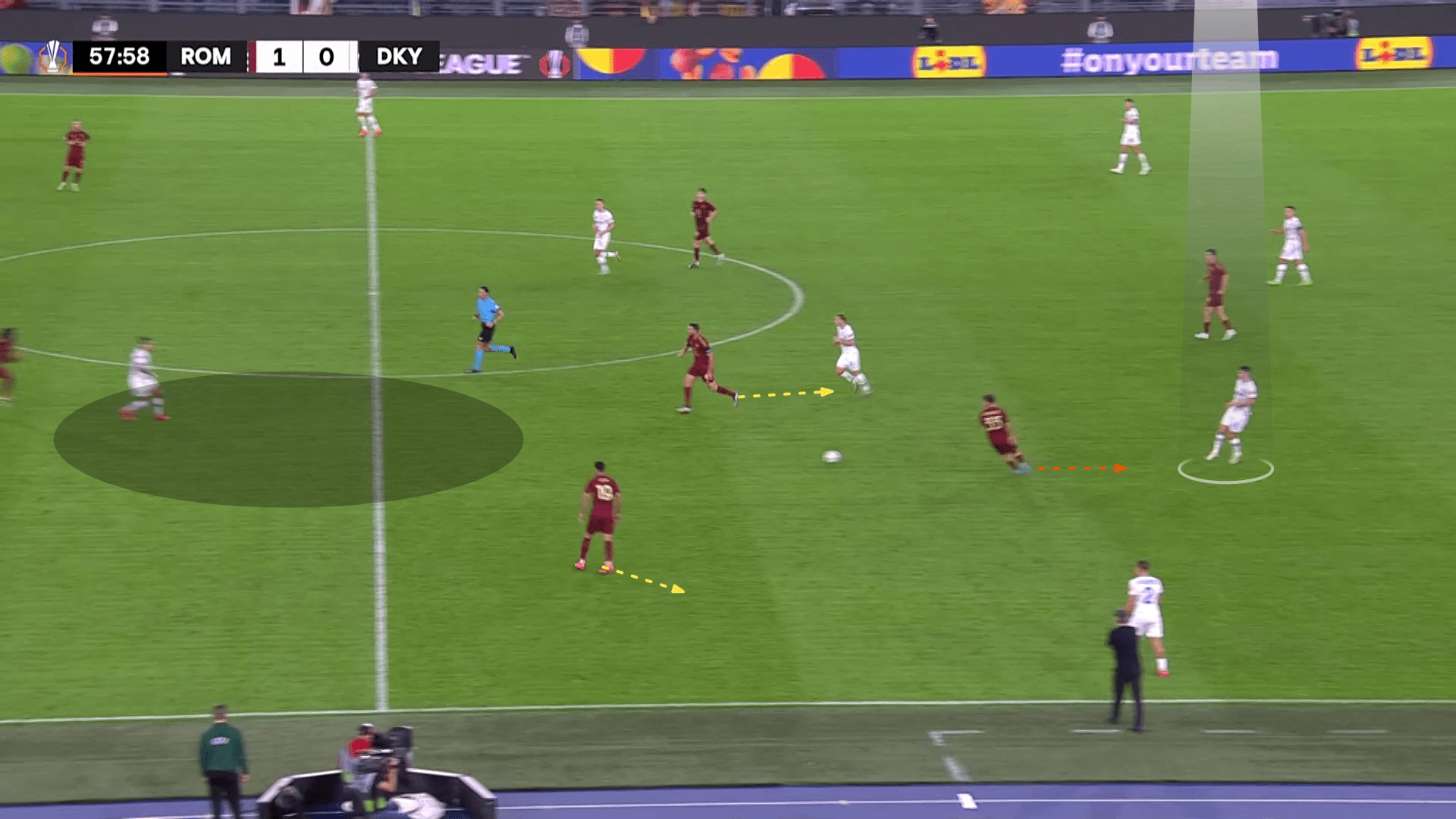
As in the case below, he can dribble straight and feint with the ball to find the right passing option.
He gets the ball back to his team and dribbles with the ball as usual, reaching the opponent’s midfield.
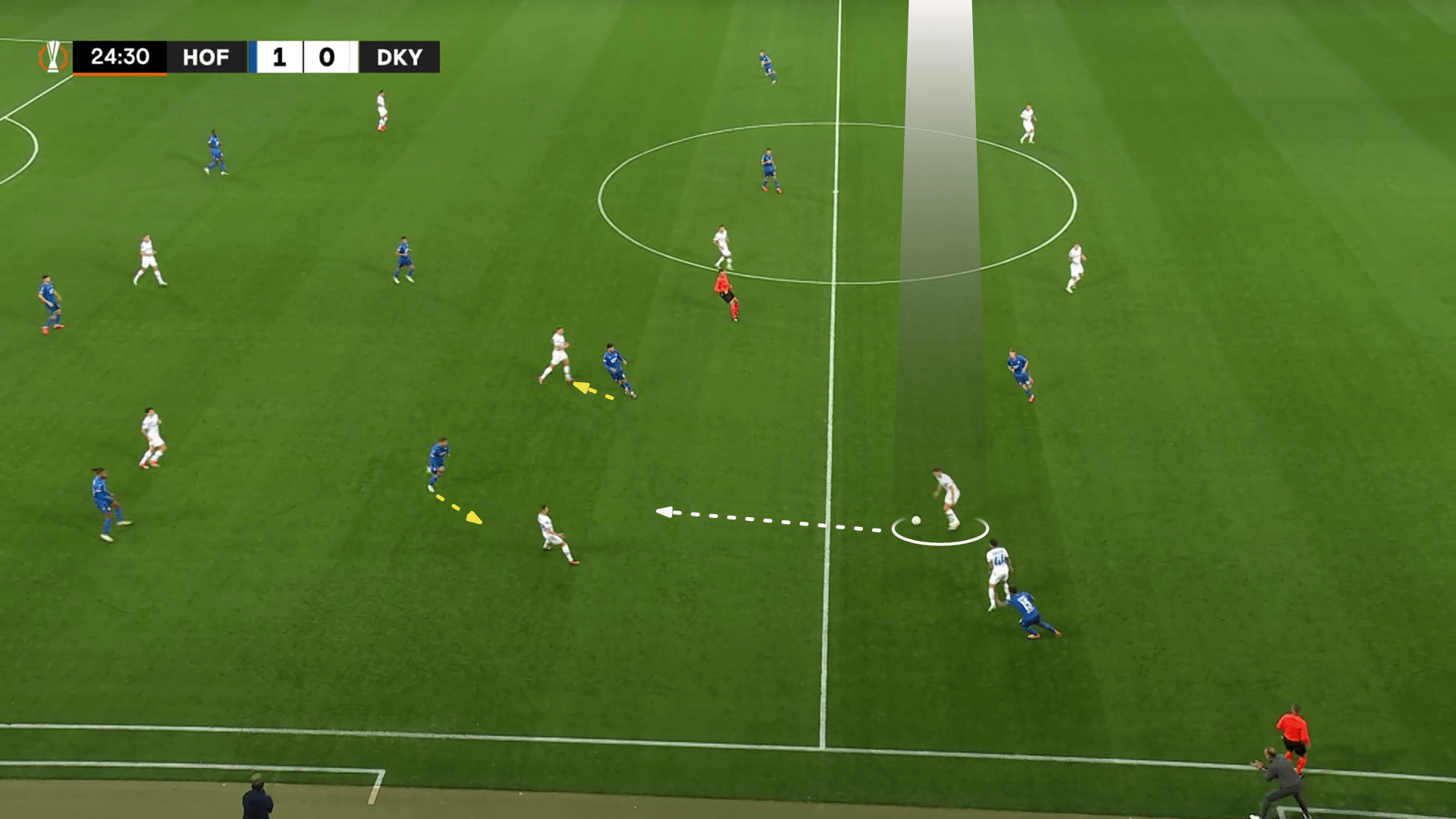
In the photo below, he fakes that he will pass and then dribbles inside, passing the ball to his teammate on the right, who has the option to pass to the area behind the midfield, as in the two following photos.
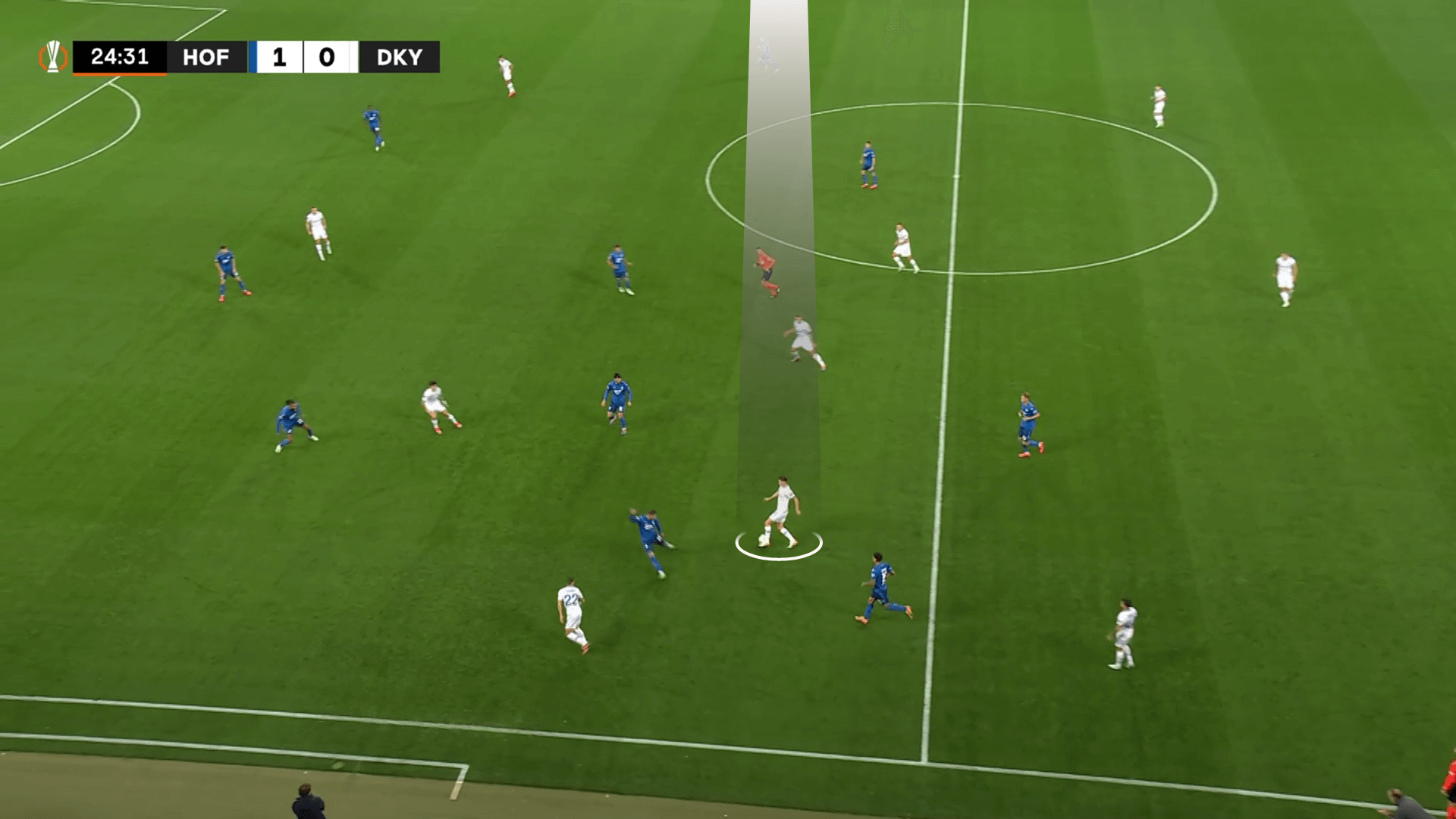
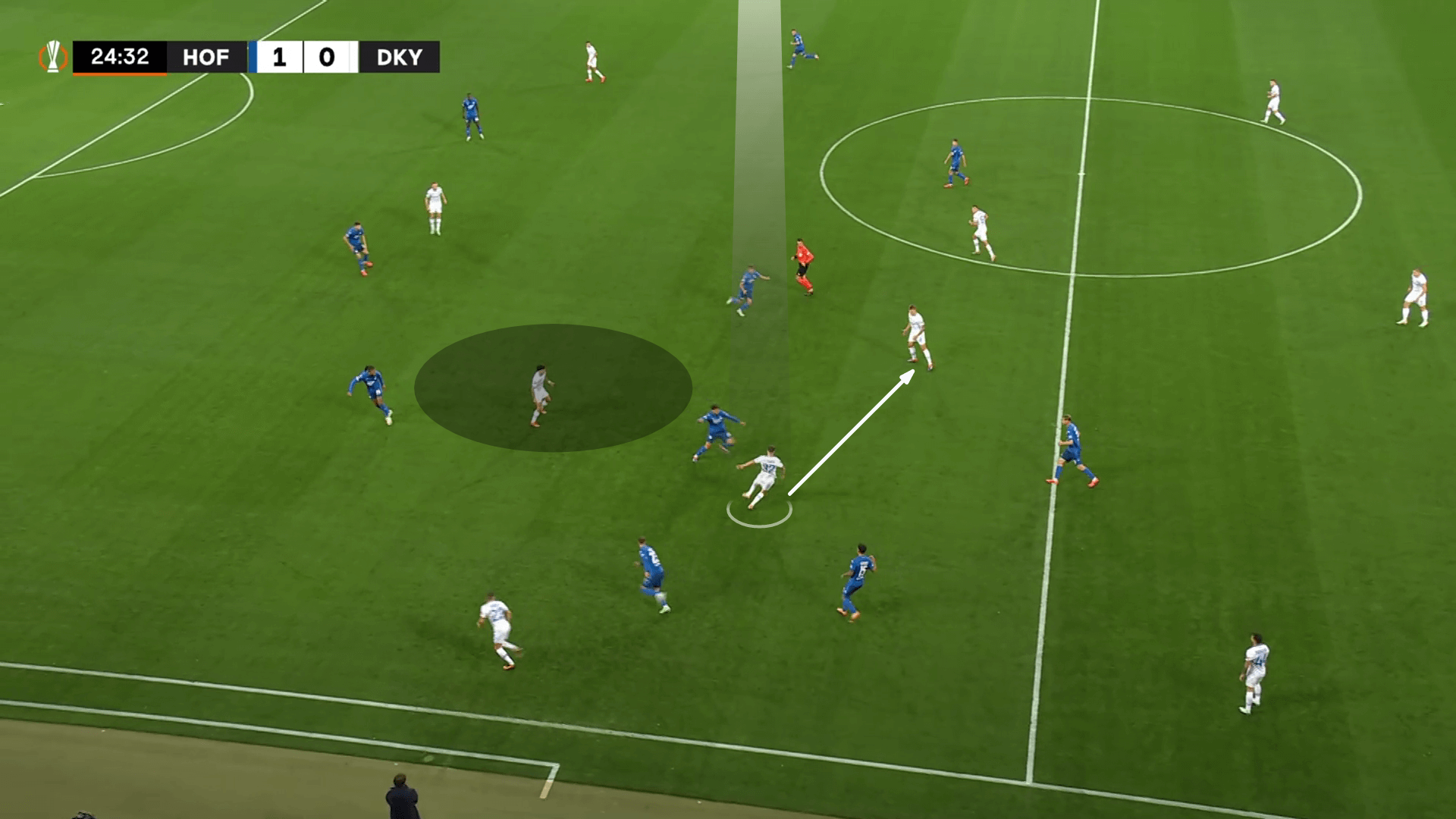
Taras Mykhavko Ability To See Passes
His second important skill is his ability to see the best and cleverest passing options to create space.
Many players just run with the ball toward their teammates, closing the passing options and narrowing their space.
In the case below, he discovered a space for his teammate, who didn’t realise the good space he stood in and could exploit.
In the photo below, he has the ball while the six in his team is asking him to pass to the other centre-back, not realising the area he has or maybe because of the striker who cuts the passing lane to him.
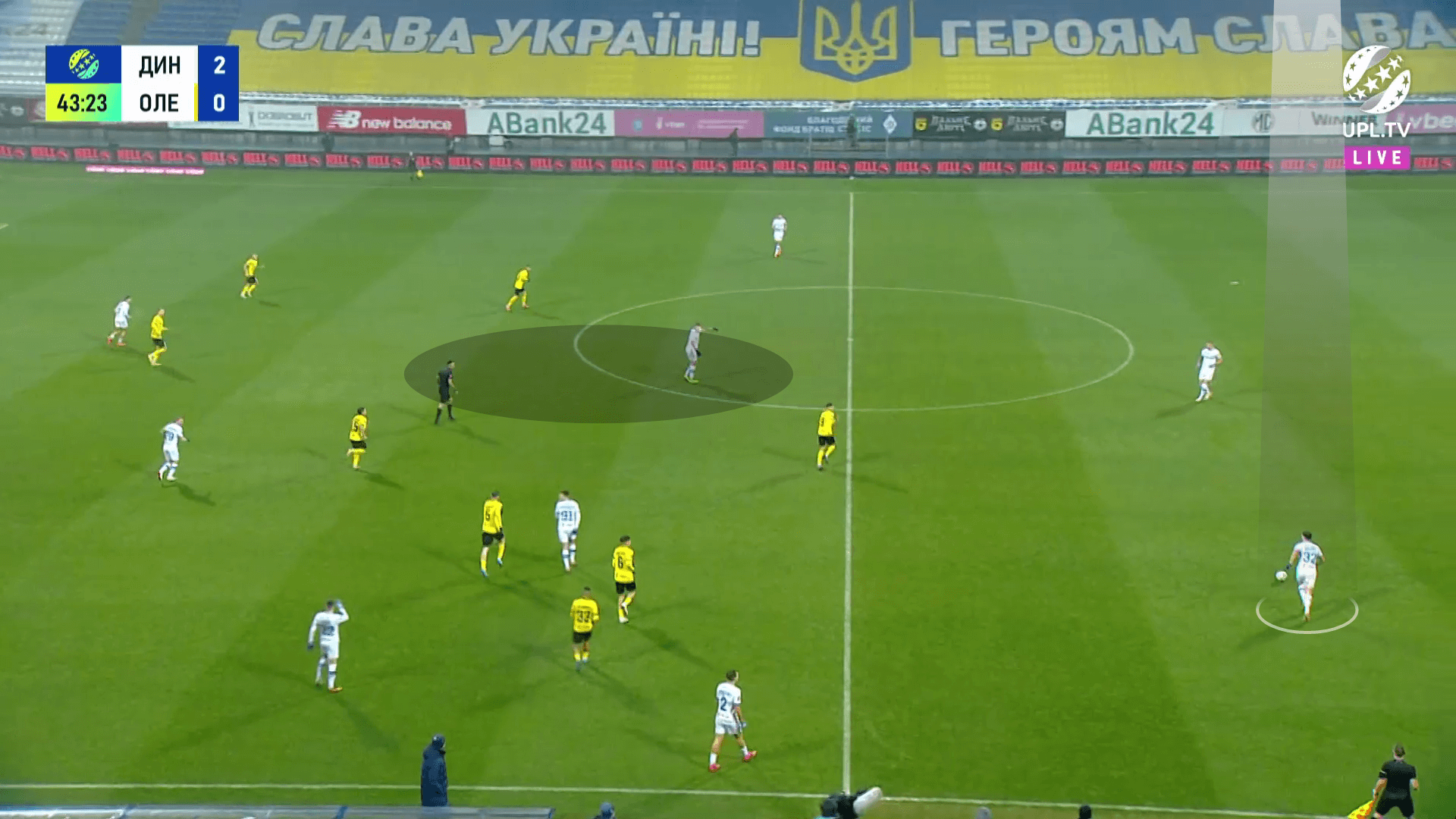
The 19-year-old defender dribbles a bit toward the other centre-back, making the striker shift slightly toward him.
This opens the passing lane for the six, who can now receive and turn to exploit this area.
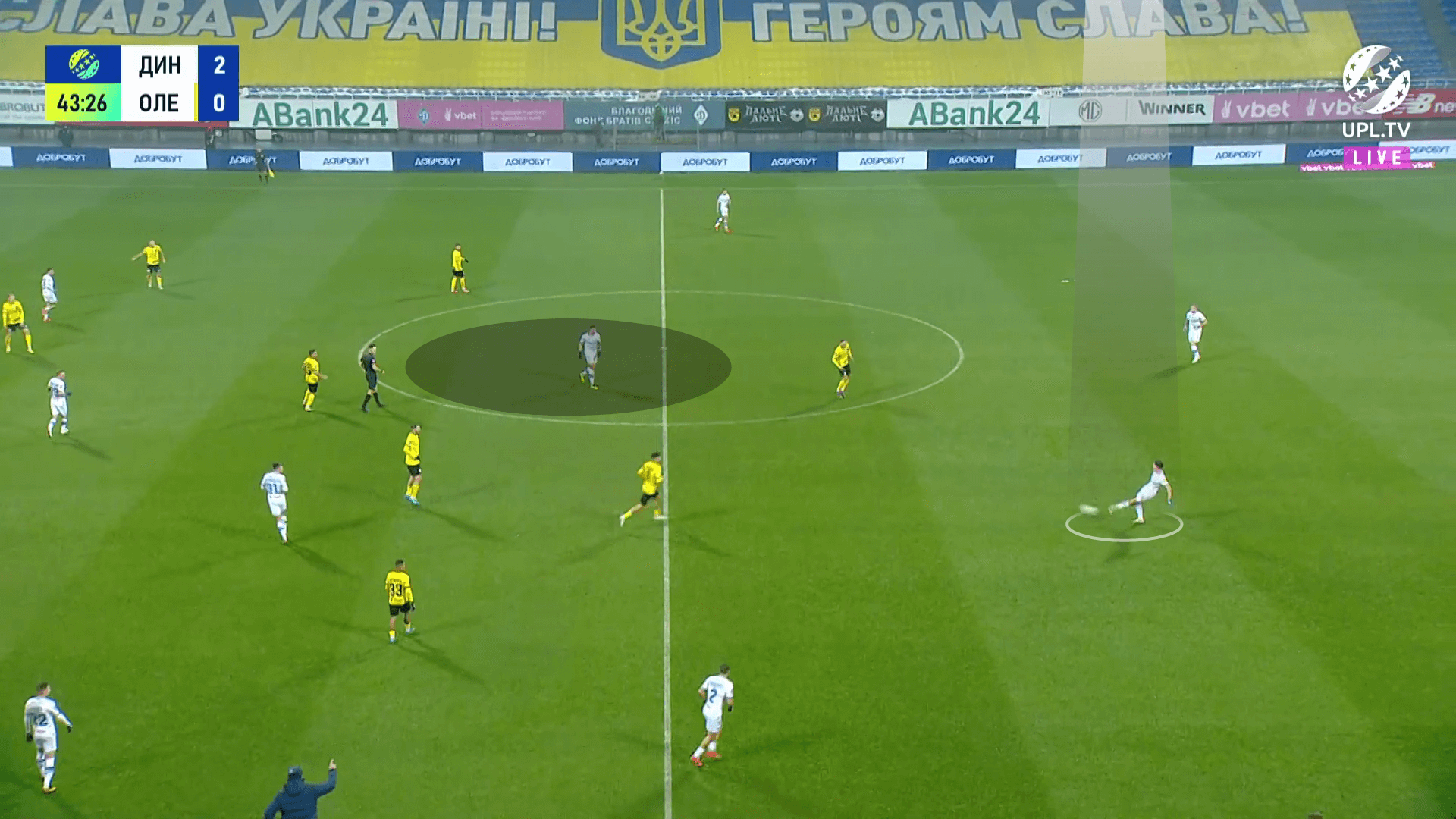
Taras Mykhavko Composure On The Ball
He can’t implement these skills without the third important one: being composed on the ball without any rush, waiting for the best solution to keep possession with his team, not just clearing the ball.
In the first photo below, the other centre-back passes the ball to him horizontally, which triggers the opponent to press him while pressing the near-passing options (yellow arrows).
It is apparent in the second photo that he is pressed and can’t even find the six because the pressing player covers the shadow of him, but his neck is always high, so he can always behave.
He lets the ball come over him to make the orange defender think that he will pass to the left full-back and then passes the ball into the space into the middle at the right moment, which can be called a disguised pass, as shown in the third and fourth photos.
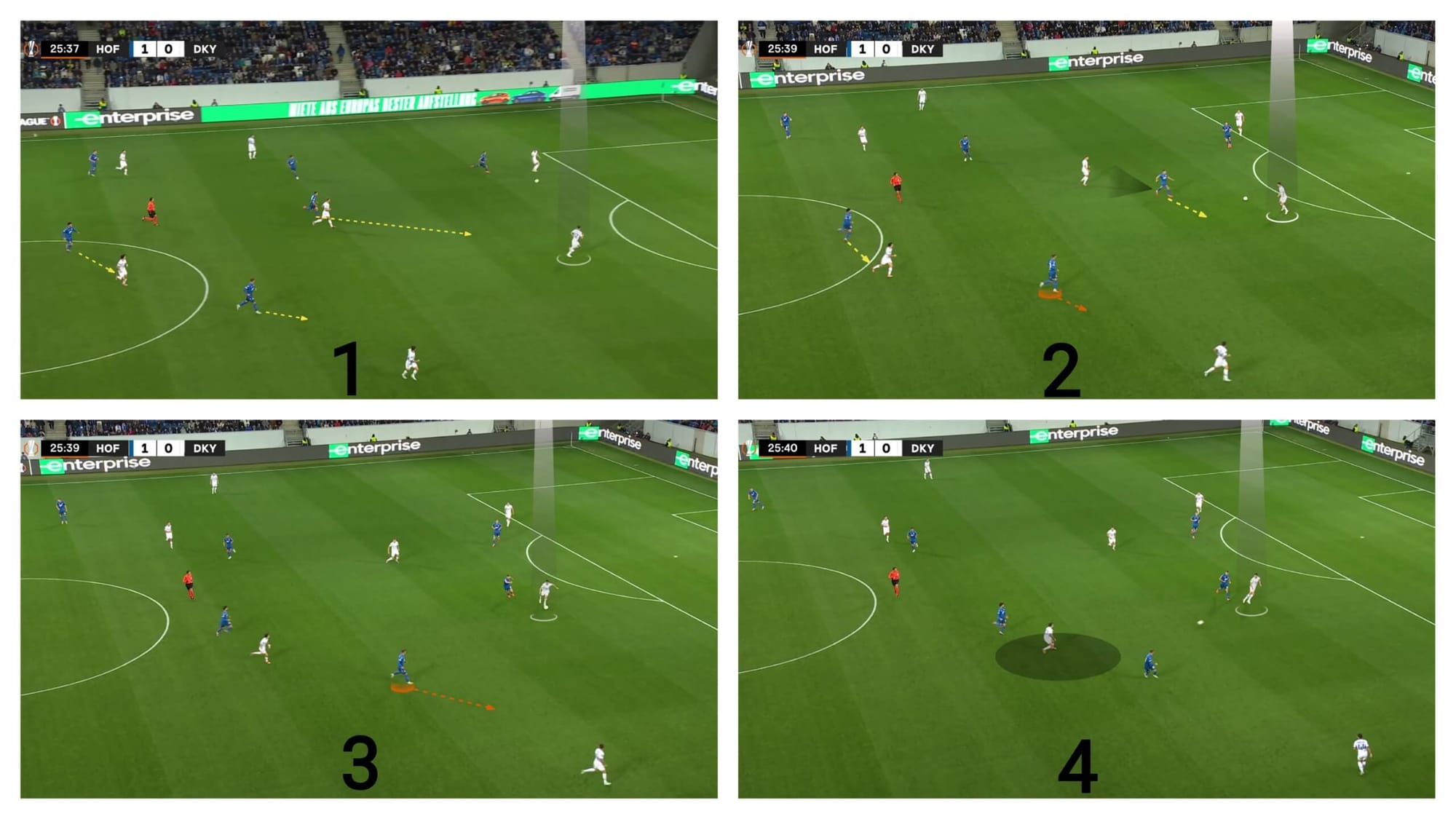
Sometimes, defenders just need to compose and pause the game until the appropriate passing moment when the passing lane is open.
It is evident in the photo that he is in a difficult situation pressed by an attacker who curves his run, which makes it risky to pass to the left, so he receives the ball calmly without fear, raising his neck trying to find a passing lane to the right full-back by just small touches to open the passing lane waiting for the appropriate time.
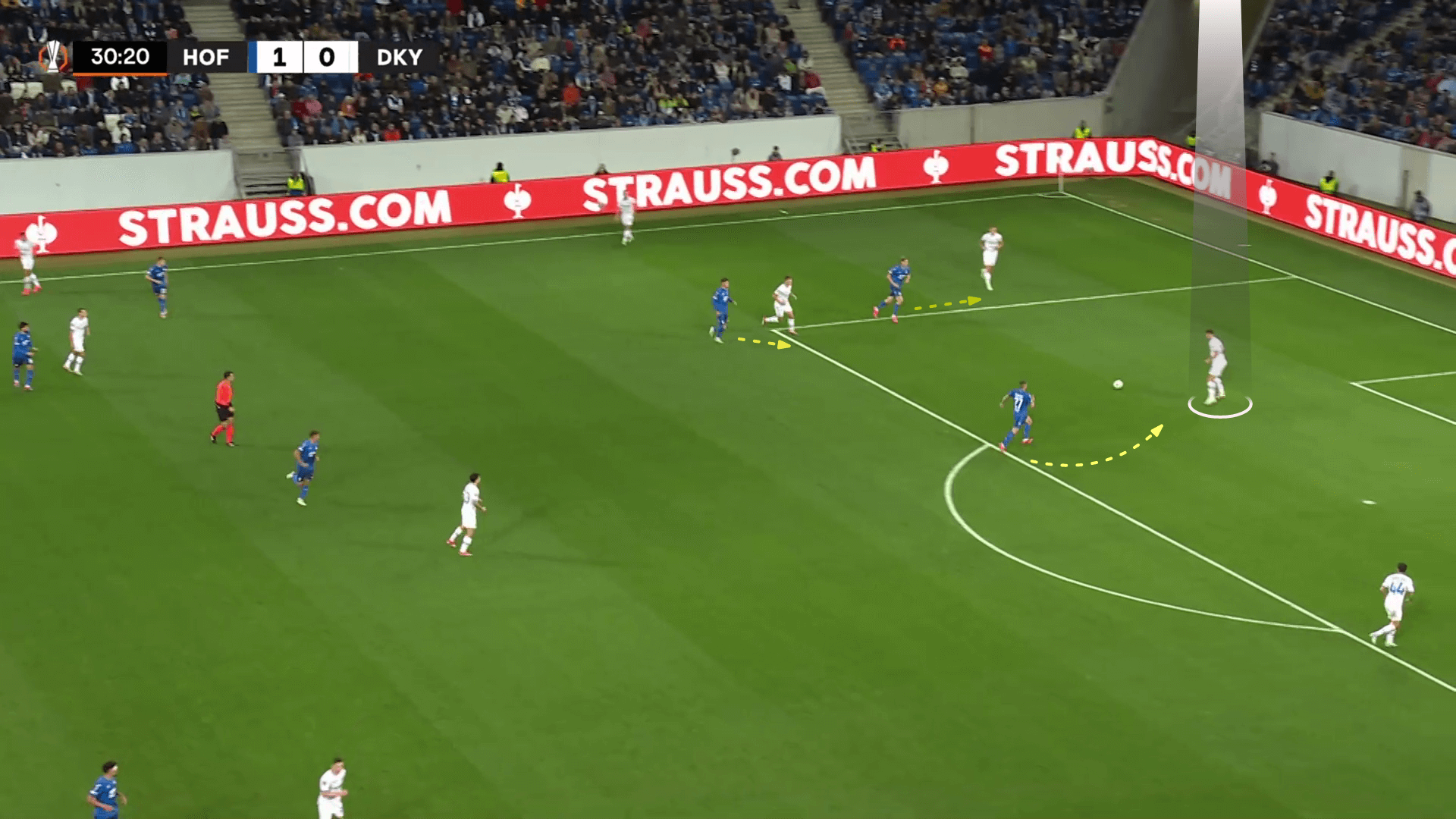
The plan works, as shown in the photo below.
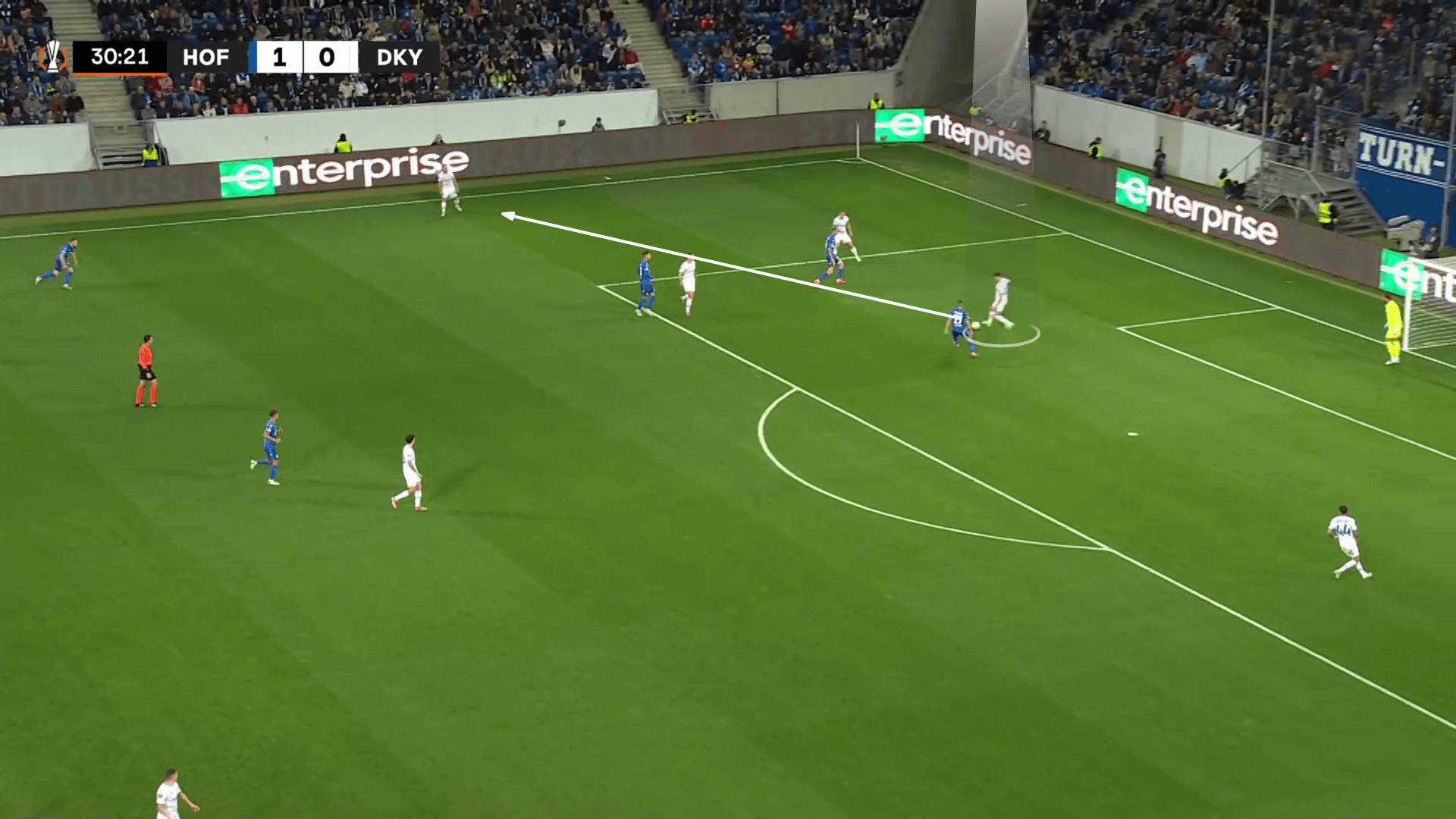
Taras Mykhavko Off-The-Ball Skills
Now, the time has come to discuss his defending skills.
We will start with a crucial factor for many teams in modern football: defending on the front foot.
Taras Mykhavko Front-Foot Defending
Front-foot defending means that the defender should always stand at an appropriate and moderate distance between him and the defender to be able to intercept the pass played to the attacker before him or at least prevent him from turning around, depending on the situation.
He shouldn’t be so close not to have a through pass played at his back and shouldn’t be so far not to give the attacker the time to turn and face the defence.
Hence, applying the proper front-foot defending is difficult.
He stands at a good distance from the opponent with good anticipation, which makes him expect these passes (green arrows), so he starts to be a bit closer.
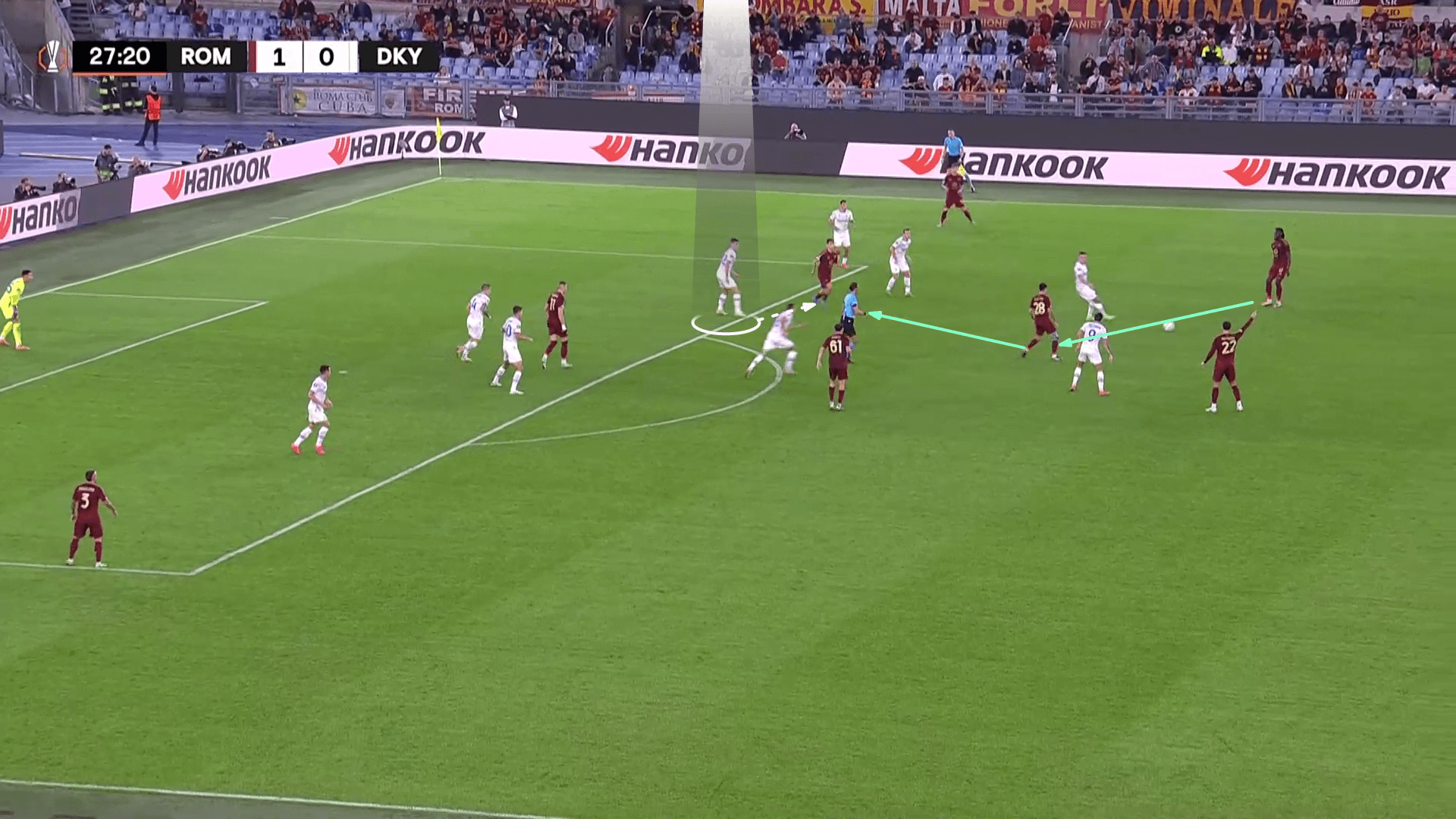
This simple action prevents the attacker from turning and creating danger.
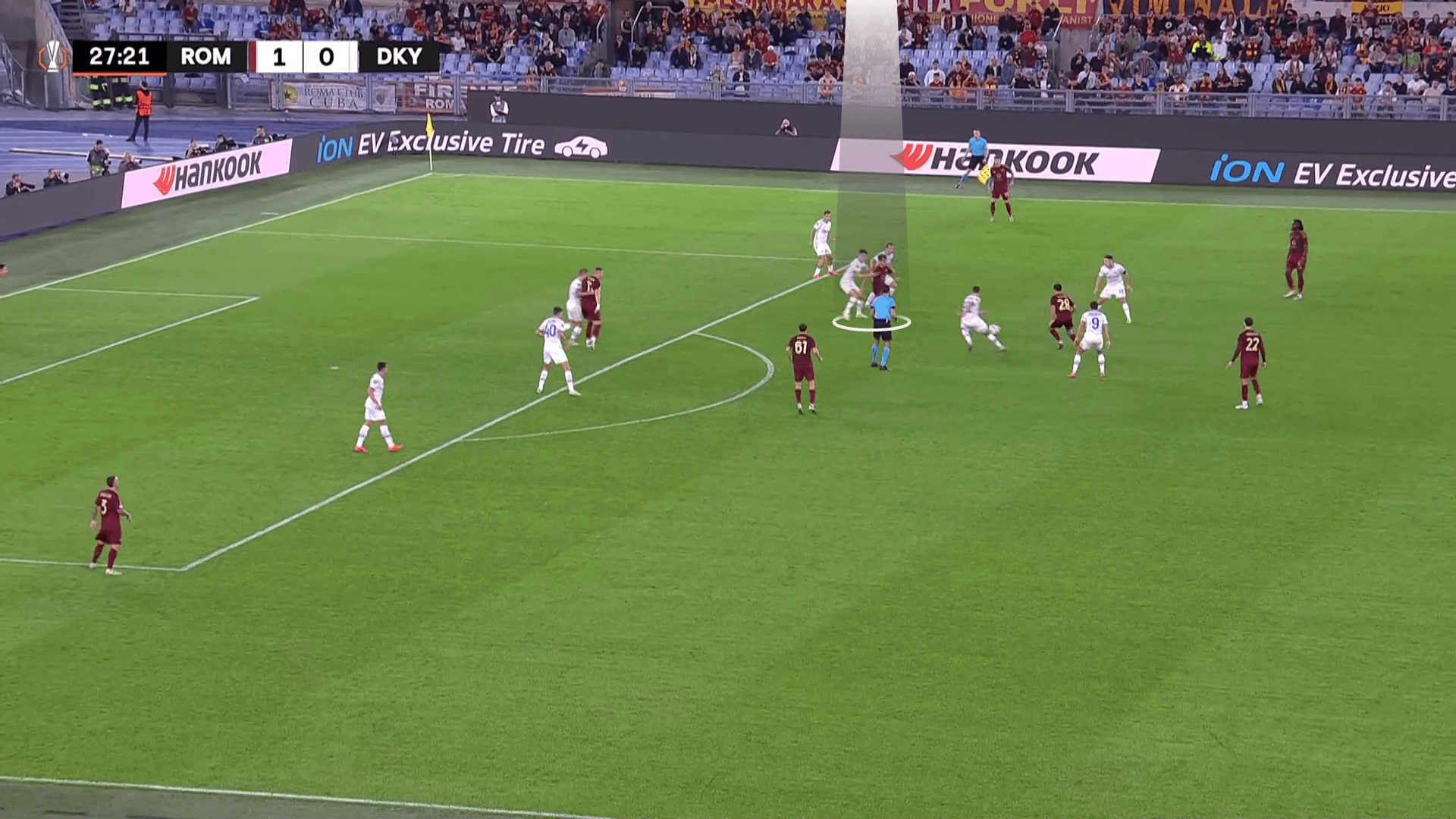
The scene also ends perfectly by returning the ball to his team, not just preventing the attacker from turning.
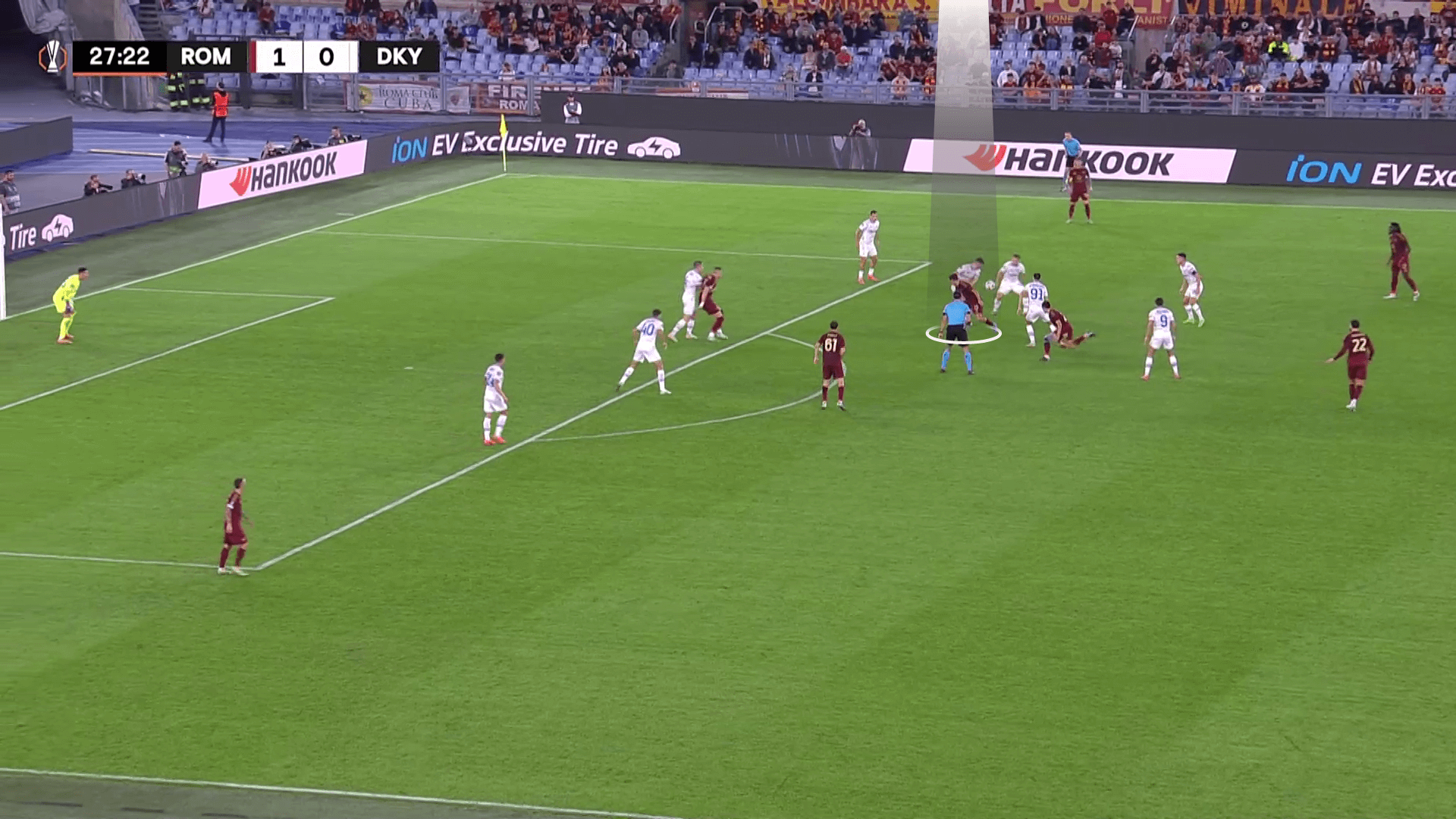
He implements the same strategy even if he is in a higher position on the pitch.
He is not afraid to push high, which is an important skill, especially at such a young age.
In the photo below, he pushes up with the attacker in the transition phase to prevent the counterattack from the beginning.
He keeps the same appropriate distance to prevent the attacker from turning and is ready to fall back if he suddenly turns to receive a through ball behind him.
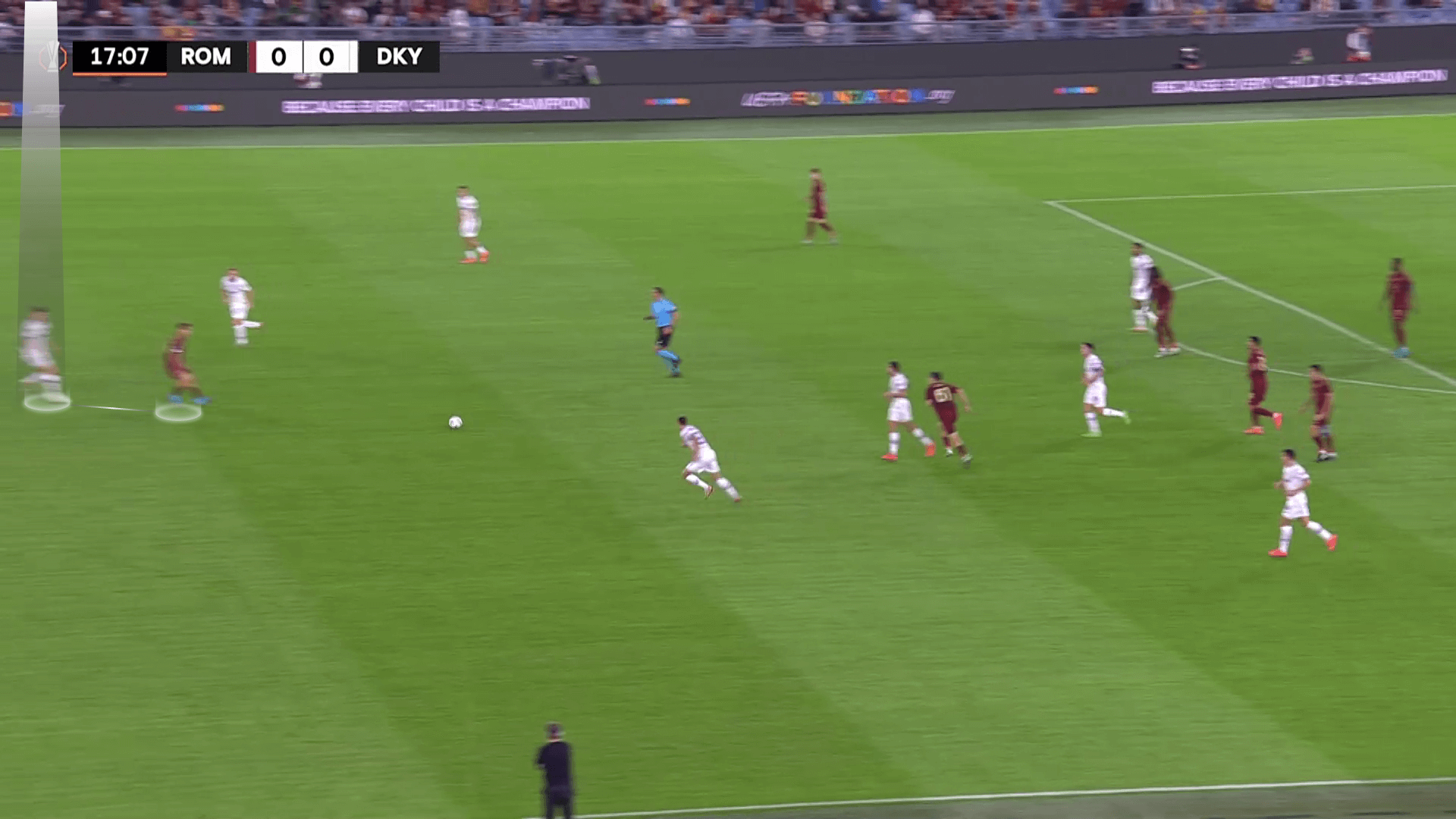
He commits a foul because of a small push but still kills the counterattack and prevents the attacker from turning.
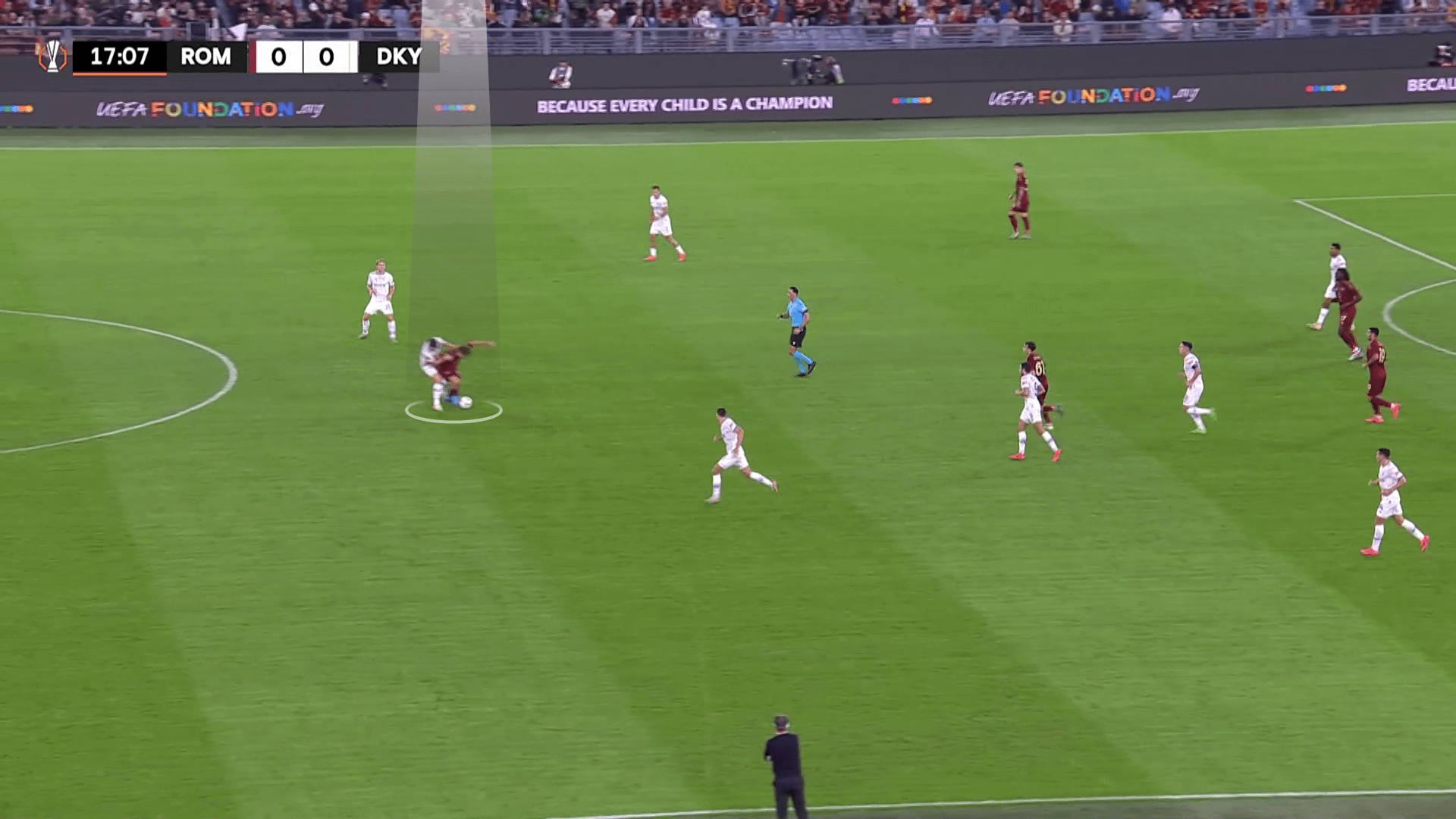
Here, we should mention a potential weakness which he can improve, especially since he is still a youngster.
This weakness appears when he hesitates to go forward to defend on the front foot because it makes him neither stay in position nor prevent the opponent from turning.
Let’s see an example.
In the first photo below, the two green passes are easily expected.
He starts at a good, moderate distance from Rome’s inside attacker (inside winger), who he is responsible for as the left centre-back in a back-three line.
Once the ball reaches Rome’s wingback, the opponent rushes toward the fullback to receive the pass.
Then, he hesitates to push up with him all that distance, which makes the distance longer.
This Rome player receives the ball and turns easily, then sends a through ball behind Taras Mykhavko to the running wing-back again, leading to a dangerous situation.
Front-foot defending can’t be implemented reasonably because Taras Mykhavko, in this case, neither stands to cover his area nor prevents the opponent from turning.
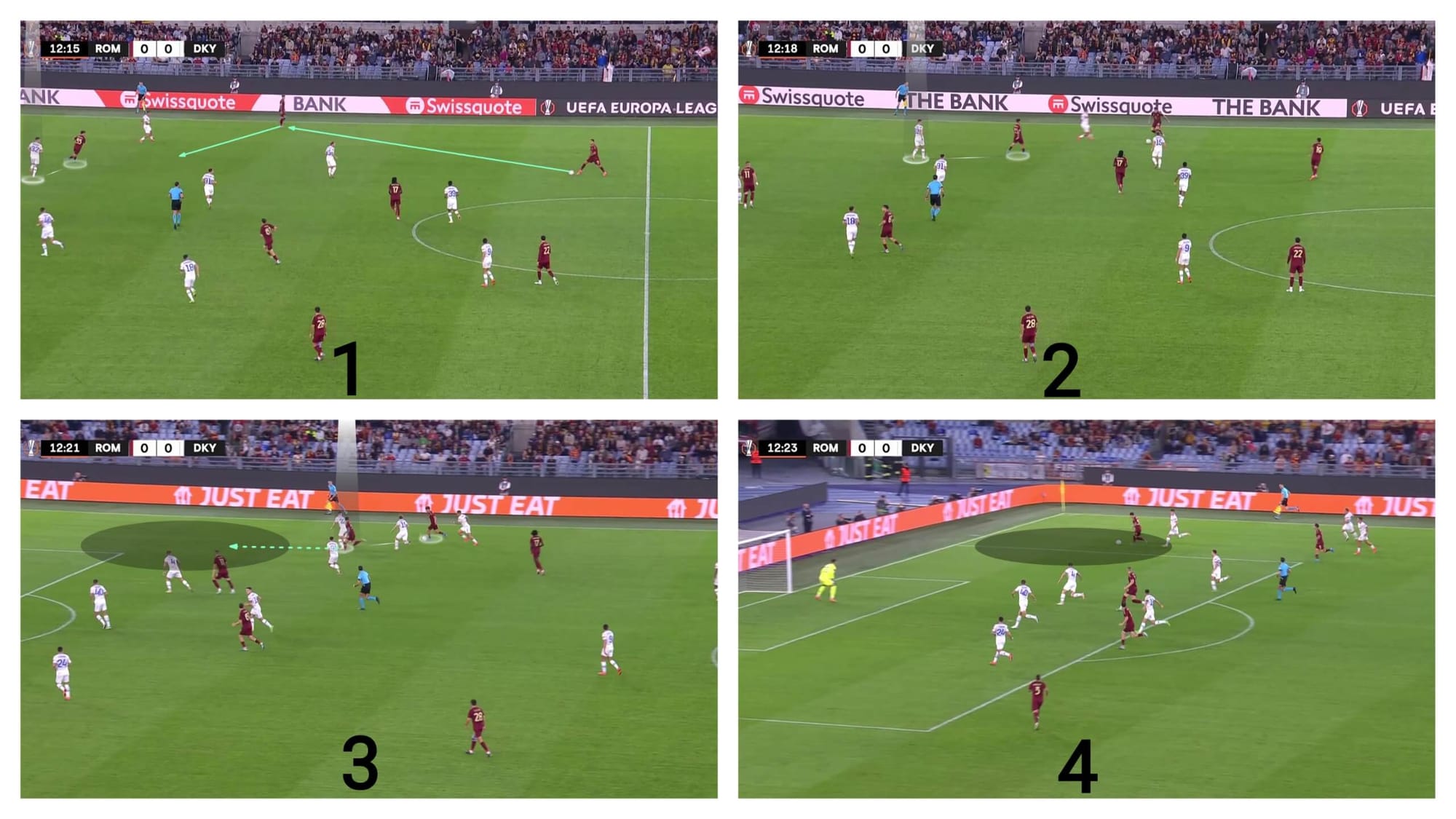
Taras Mykhavko Heading Abilities
As we have illustrated with data analysis, he may need some improvement in his heading skills.
He is not bad, but he just needs some adjustments and instructions regarding the timing, decision and trying to keep the ball with his team after the heading.
The first part means that it’s crucial to choose the timing and decide whether the situation needs him to go to win the header in the full-back zone or not, depending on the measurement of the risk and the long ball.
The second part means that he sometimes prioritises just clearing the ball away, especially near his box.
Still, elite defenders also try to find a heading passing option to keep possession in case the situation helps.
Let’s see an example, knowing he is still young and can improve in these small aspects.
In the photo below, Taras Mykhavko decides to chase this aerial conflict near the left full-back.
This is good and usually happens in many teams, but you should be sure when you do that because you will leave a huge space behind you if you fail.
It is supposed to be teamwork, not a single one, with the rest of the defensive line standing narrowly and covering you.
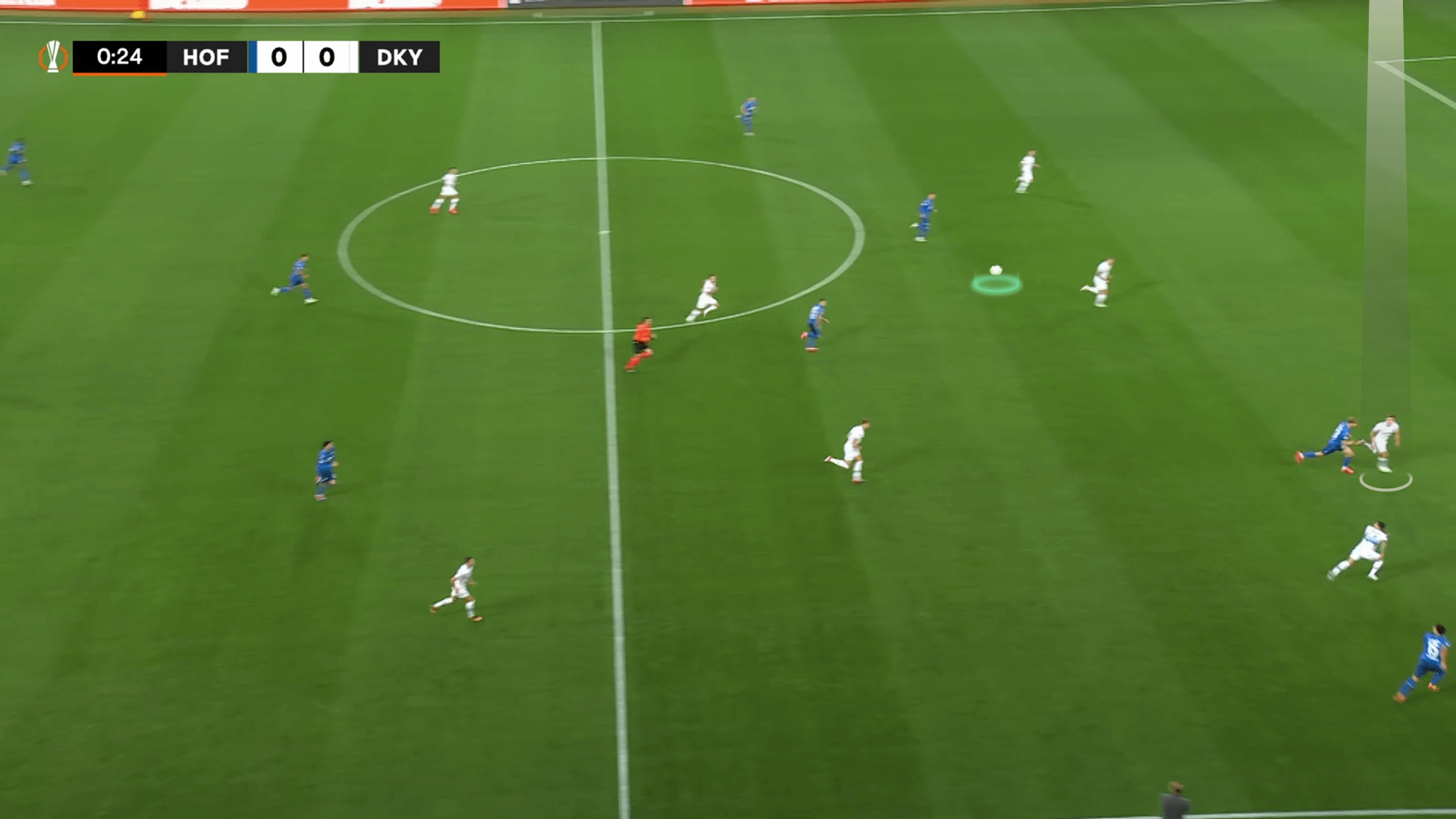
In the photo below, Taras Mykhavko leaves his space and fails to measure this aerial situation properly, leaving a dangerous area behind him that the ball can reach.
This has already happened.
We repeat that he can be better in this aspect with more experience.
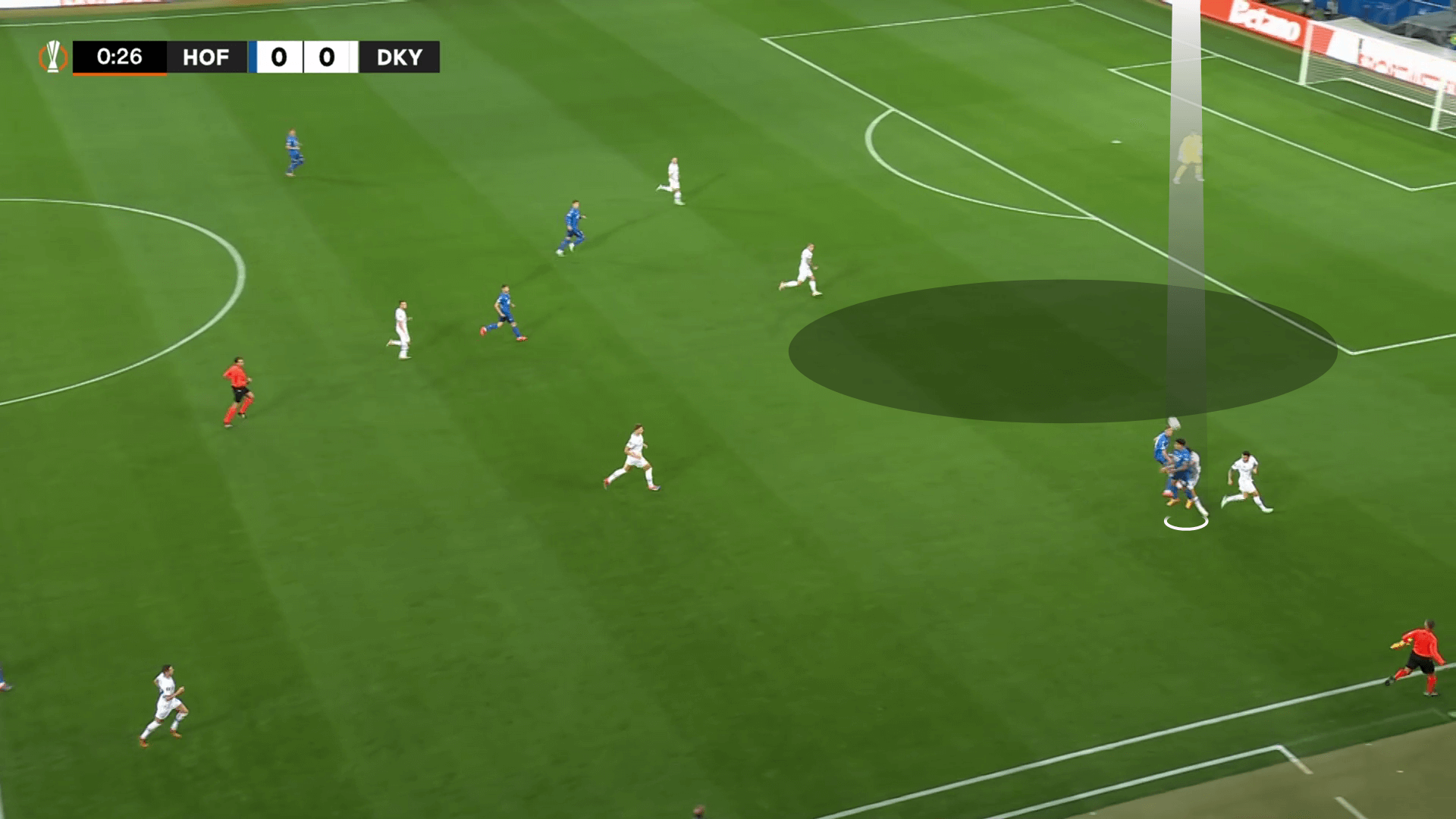
Conclusion
In this analysis, we have illustrated Taras Mykhavko’s various skills, showing his ability to be effective offensively and defensively, especially at such a young age.
We have also shown how he can improve on some points.
This scout report dissects his dribbling skills, ability to see passes, composure on the ball, and front-foot defending while showing how he needs to improve his tackling and heading.

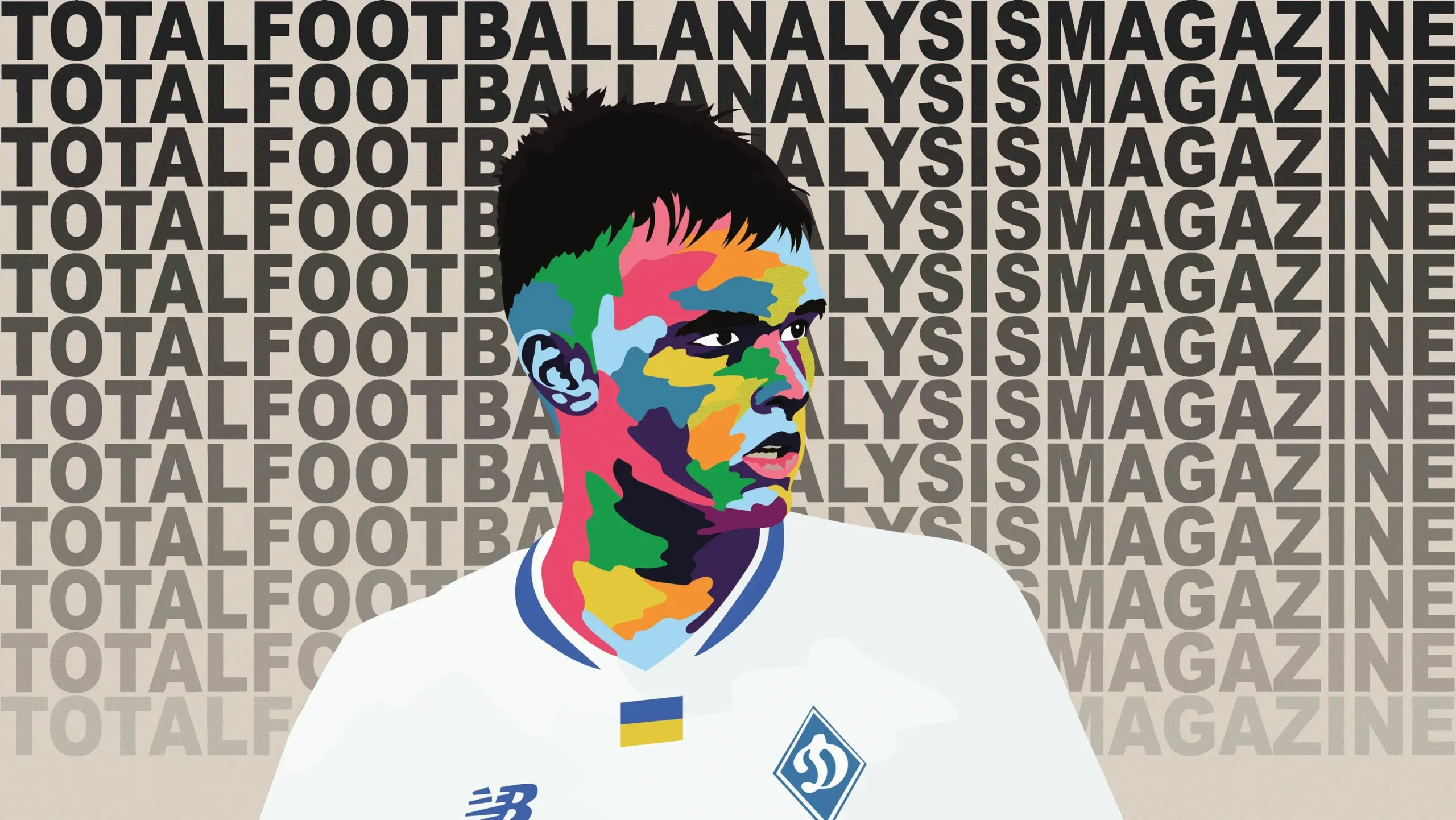




Comments